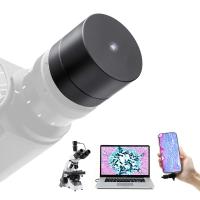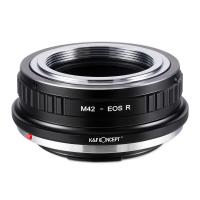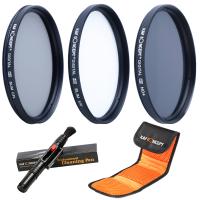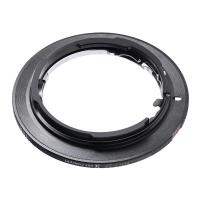How To Get 400x Magnification ?
To achieve 400x magnification, you would typically need to use a compound microscope with a high-power objective lens. Compound microscopes have multiple lenses that work together to magnify the specimen. The total magnification is calculated by multiplying the magnification of the objective lens by the magnification of the eyepiece. To reach 400x magnification, you would need to use an objective lens with a magnification of 40x and an eyepiece with a magnification of 10x. Keep in mind that achieving higher magnifications may require careful focusing and adjustment of the microscope's settings.
1、 Microscope with 400x Magnification: Equipment and Specifications
To achieve a 400x magnification with a microscope, you will need the appropriate equipment and specifications. Here's a guide on how to get 400x magnification:
1. Choose a microscope with a high magnification capability: Look for a microscope that offers a maximum magnification of at least 400x. This can be achieved with a compound microscope, which typically has multiple objective lenses that can be switched to achieve different magnifications.
2. Select the right objective lens: The objective lens is responsible for the primary magnification. To achieve 400x magnification, you will need an objective lens with a magnification power of 40x. This is typically labeled on the lens itself.
3. Use the appropriate eyepiece: The eyepiece further magnifies the image produced by the objective lens. To achieve 400x magnification, you will need an eyepiece with a magnification power of 10x. This is a standard eyepiece found in most microscopes.
4. Calculate the total magnification: To determine the total magnification, multiply the magnification power of the objective lens (40x) by the magnification power of the eyepiece (10x). In this case, 40x multiplied by 10x equals 400x.
5. Adjust the focus: Once you have set the appropriate magnification, use the focus knobs on the microscope to bring the specimen into sharp focus. This will ensure a clear and detailed image at 400x magnification.
It's important to note that achieving higher magnifications may require more advanced microscopes or additional accessories. Additionally, the quality of the microscope and the specimen being observed can also impact the clarity and resolution of the image at higher magnifications.

2、 Adjusting the Focus and Magnification on a Microscope
To achieve a 400x magnification on a microscope, you will need to follow a few steps. Here is a guide on adjusting the focus and magnification:
1. Start by placing the specimen on the microscope stage and securing it in place using the stage clips. Ensure that the specimen is centered and in focus under the lowest magnification objective lens.
2. Rotate the nosepiece to switch to the next higher magnification objective lens. Most microscopes have a 10x, 40x, and 100x objective lens. To achieve 400x magnification, you will need to use the 40x objective lens.
3. Use the coarse focus knob to bring the specimen into rough focus. This knob is usually larger and located on the side of the microscope. Turn it in the appropriate direction until the image becomes clearer.
4. Once the specimen is roughly in focus, use the fine focus knob to adjust the focus more precisely. This knob is usually smaller and located near the coarse focus knob. Make small adjustments until the image is sharp and clear.
5. If necessary, adjust the condenser and diaphragm to enhance the contrast and brightness of the image. These controls are typically located beneath the stage and can be adjusted to optimize the lighting conditions.
6. Finally, observe the specimen through the eyepiece and make any additional adjustments to the focus or magnification as needed.
It is important to note that achieving a 400x magnification may require the use of oil immersion techniques, depending on the microscope and objectives being used. Always refer to the manufacturer's instructions for specific guidance on your microscope model.
In recent years, advancements in microscope technology have led to the development of digital microscopes that offer higher magnification capabilities. These microscopes often come with built-in cameras and software, allowing for easy image capture and analysis. Additionally, some microscopes now offer motorized focus and magnification adjustments, making it even easier to achieve precise magnification levels.
Remember to handle the microscope and its components with care to avoid damage and ensure accurate results. Regular maintenance and cleaning are also essential to keep the microscope in optimal working condition.

3、 Techniques for Achieving 400x Magnification in Microscopy
Techniques for Achieving 400x Magnification in Microscopy
Achieving a magnification of 400x in microscopy requires careful consideration of several factors, including the microscope setup, objective lenses, and sample preparation. Here are some techniques to help you achieve this level of magnification:
1. Choose the right microscope: Select a compound microscope with a high numerical aperture (NA) and a suitable magnification range. A microscope with a 10x eyepiece and a 40x objective lens can achieve a total magnification of 400x.
2. Use oil immersion: For higher magnifications, oil immersion objectives are essential. These objectives have a higher NA and require the use of immersion oil to minimize light refraction and increase resolution.
3. Optimize lighting conditions: Proper illumination is crucial for achieving high magnification. Use a bright and uniform light source, such as an LED or halogen lamp, and adjust the intensity to avoid overexposure or underexposure.
4. Prepare thin samples: To achieve higher magnifications, samples should be thin enough to allow light to pass through easily. Thin sections or smears can be prepared using techniques like microtomy or cytospinning.
5. Stain or label samples: Enhance contrast and visibility by staining or labeling your samples. Fluorescent dyes, immunohistochemical markers, or specific stains can help highlight specific structures or cells of interest.
6. Use digital imaging: Capture images using a high-resolution camera attached to the microscope. Digital imaging allows for better documentation, analysis, and sharing of the observed structures.
It is important to note that achieving 400x magnification alone may not guarantee the desired level of resolution or clarity. The quality of the microscope, objective lenses, and sample preparation techniques all play a significant role in obtaining high-quality images. Additionally, advancements in microscopy technology continue to push the boundaries of magnification and resolution, so staying updated with the latest developments is crucial for achieving the best results.

4、 Limitations and Considerations of 400x Magnification in Microscopy
To achieve a 400x magnification in microscopy, there are several factors and considerations that need to be taken into account. Here are some steps to help you achieve this level of magnification:
1. Choose the right microscope: Select a compound microscope that has the capability to achieve a 400x magnification. This typically requires a microscope with a high numerical aperture (NA) objective lens and a suitable eyepiece.
2. Use appropriate lenses: To achieve a 400x magnification, you will need to use a high-power objective lens, typically a 40x or 60x lens, in combination with a 10x eyepiece. This combination will provide the desired level of magnification.
3. Prepare your sample: Ensure that your sample is properly prepared and mounted on a microscope slide. This may involve staining or fixing the sample to enhance visibility under the microscope.
4. Adjust the focus: Use the coarse and fine focus knobs on the microscope to bring your sample into focus. It is important to make small adjustments to avoid overshooting the focus point.
5. Consider the limitations: While a 400x magnification can provide detailed views of microscopic structures, it is important to be aware of the limitations. At this level of magnification, the depth of field becomes very shallow, meaning that only a thin slice of the sample will be in focus at any given time. Additionally, the resolution may be limited by the quality of the microscope and the numerical aperture of the objective lens.
It is worth noting that advancements in microscopy technology, such as confocal microscopy and super-resolution techniques, have pushed the boundaries of magnification and resolution beyond traditional limits. These techniques can provide even higher levels of magnification and improved resolution, allowing for more detailed observations of microscopic structures.
































There are no comments for this blog.